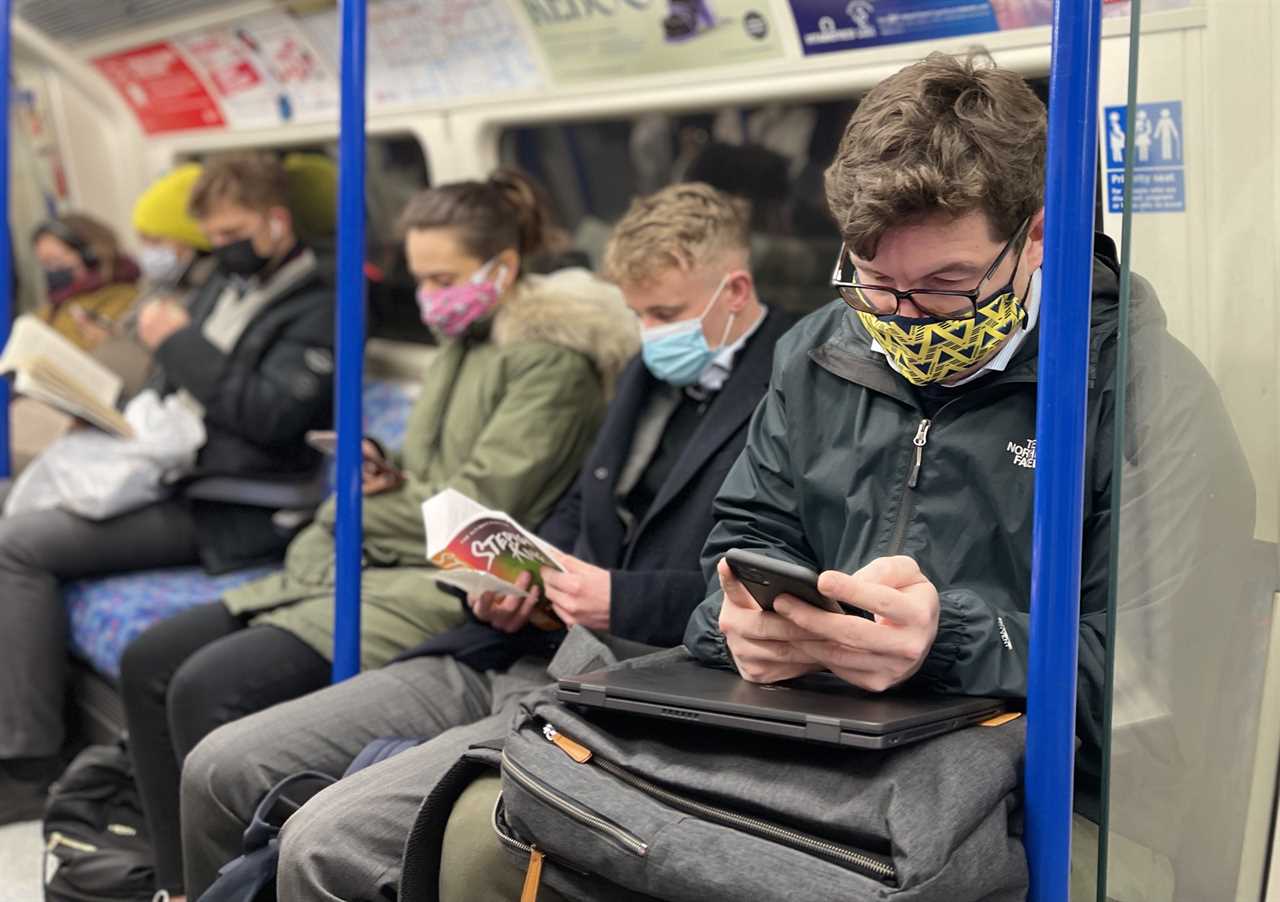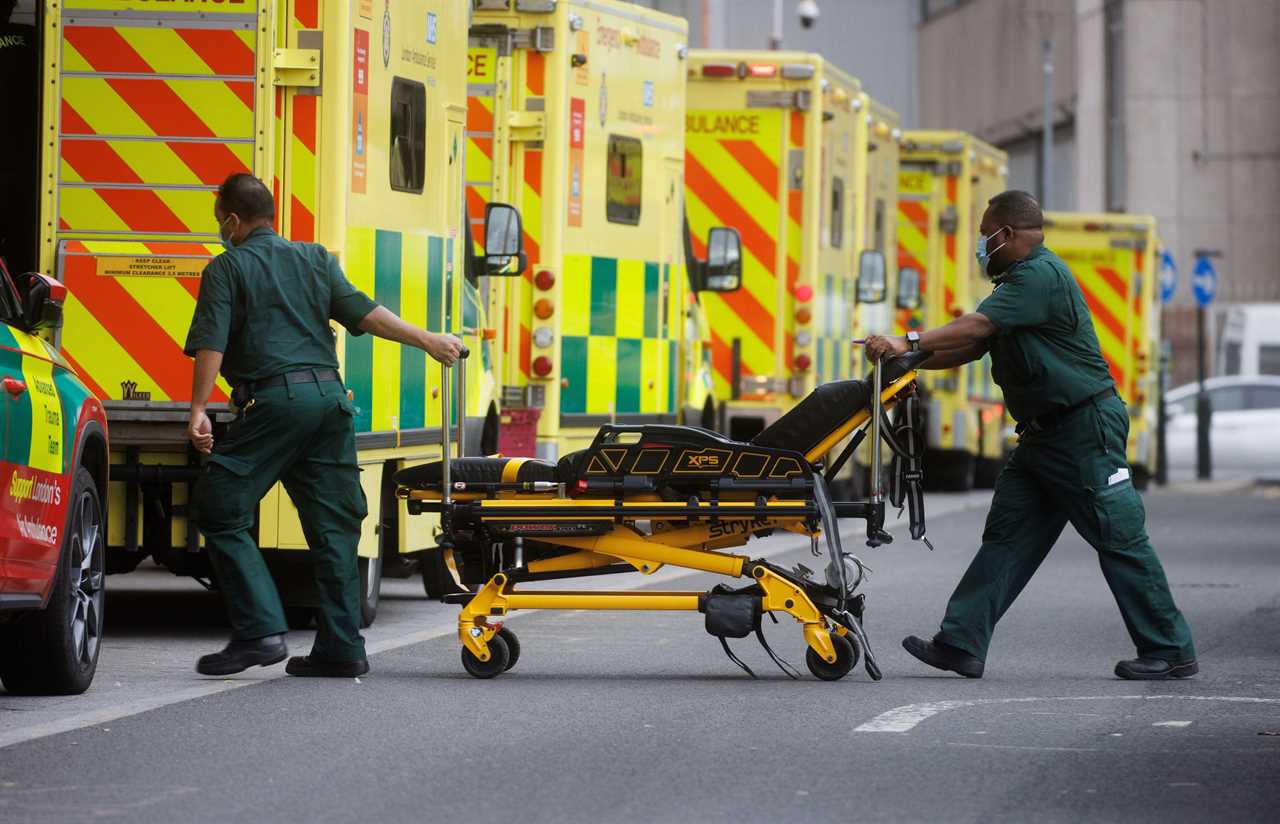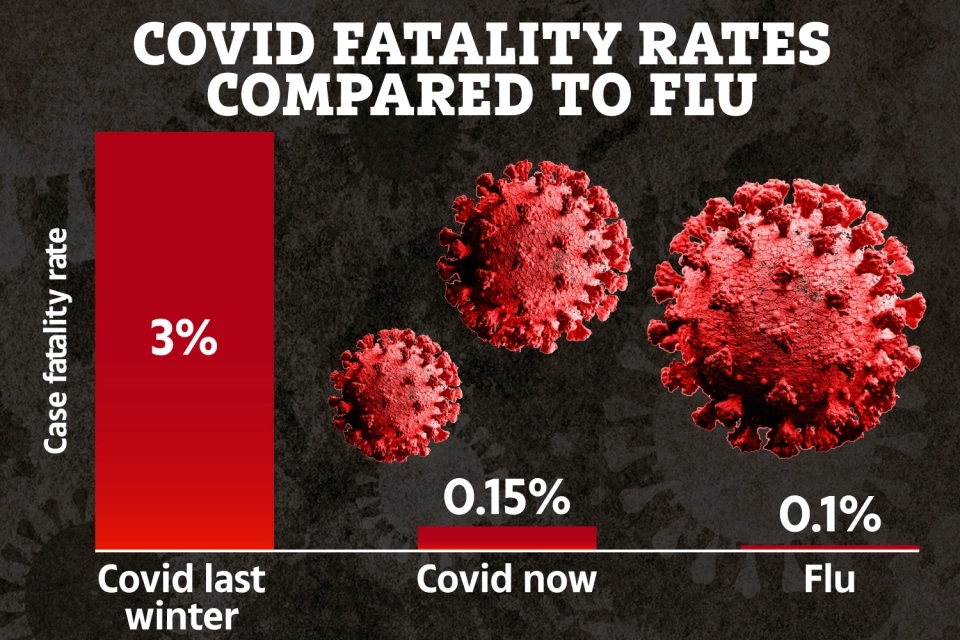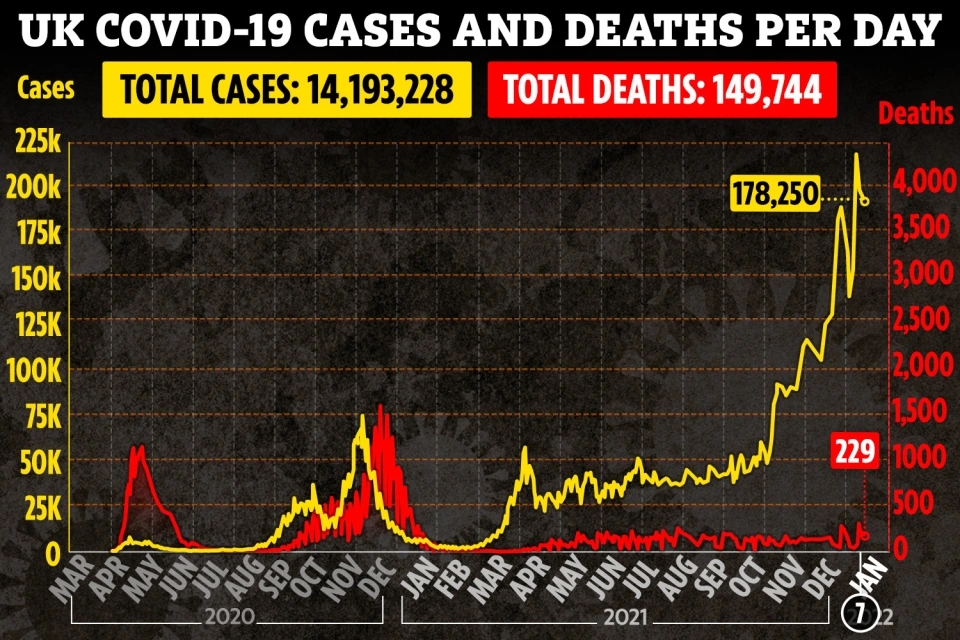OMICRON could be 99 per cent less deadly than other Covid variants as daily cases fall for a third day in a row.
In a glimmer of hope that the worst of the pandemic might be over, the ultra-infectious strain of Covid could also be less deadly than flu.



Sajid Javid revealed today that Omicron is up to 90 per cent milder for boosted Brits in a huge breakthrough in the fight against the virus.
The Health Secretary said the NHS faces a “rocky” few weeks but he remained encouraged by the latest data emerging about the variant.
It follows a string of hugely positive studies show Omicron IS milder than other strains, with the first official UK report revealing the risk of hospitalisation is 50 to 70 per cent lower than with Delta.
Covid booster jabs protect against Omicron and offer the best chance to get through the pandemic, health officials have repeatedly said.
Trending In The News’s Jabs Army campaign is helping get the vital extra vaccines in Brits’ arms to ward off the need for any new restrictions.
Mr Javid said a killer combination of boosters and groundbreaking antiviral drugs have put the country on a much better footing to fight Covid.
And according to analysis by the MailOnline, Covid killed one in 33 people who tested positive at the peak of the second wave of last January, compared to one in 670 now.
The analysis revealed the Covid case fatality rate had dropped to 0.15 per cent at the end of December, compared to highs of more than 3 per cent during the devastating wave of infections last winter.
For comparison, the fatality rate – the proportion of confirmed infections that end in death – for flu is 0.1, the equivalent of one in 1,000.
And experts reportedly believe the Covid fatality rate could now be even lower than 0.15 per cent because of the emergence of Omicron.

Follow our Covid live blog for all the latest updates
Scientists have always said Covid would eventually morph into a seasonal cold-like virus as people develops immunity through the vaccine rollout and natural infection.
But the highly-mutated Omicron variant appears to have sped the process up.
Researchers at Washington University expect Omicron to kill up to 99 per cent fewer people than Delta – in another sign it could be less deadly than flu, MailOnline reports.
The team said: “Based on the available data, we expect the infection-fatality rate will be 97-99 per cent lower than for Delta.
“Huge numbers of infections and moderate numbers of hospitalizations may still translate into a peak of reported (global) daily deaths over 9,000 in early February.”
But the experts admitted their forecasts were more “optimistic” than forecasts used by UK government scientists.
And independent academics have queried the estimate from the Washington team, saying there is still lots of uncertainty around Omicron data.
Gideon Meyerowitz-Katz, an epidemiologist at the University of Wollongong in Australia, told Mail Online his “very rough best guess’ was that boosted people were at the same risk from Omicron as they are from the flu.
It comes as daily cases fell today for the third day in a row, with 178,250 more infections reported.
Fresh data revealed the crucial Covid R rate could be as high as 1.6 in some parts of England.
A further 229 deaths were also reported on Friday, bringing the grim total since the start of the pandemic to 149,744.
CALLS TO SLASH ISOLATION
Pressure is ramping up on the Prime Minister to slash self-isolation period from seven to five days.
The PM has held off on changing isolation rules even after 24 hospital trusts declare critical incidents due to staff shortages.
Currently, confirmed cases are forced to stay at home for at least a week, down from 10 days before Christmas.
But the worker shortage has sparked renewed calls to cut isolation for people who test positive for the virus from seven to five days to get healthy and much-needed healthcare staff back to work.
Daily Covid cases have been over 100,000 for almost a fortnight, with one in 10 NHS staff off sick on New Year’s Eve.
And UK-wide, more than 3.7million people had the virus in the last week of 2021 – the highest since records began.
But ministers are defying doomster calls to trigger more restrictions and are sticking with their “balanced” Plan B approach.
The PM this week all-but ruled out a return to full-fat lockdown and declared he’s not “shutting down our country again”.
Downing Street is increasingly hopeful of ditching Plan B measures like working from home and mandatory masks when they are reviewed at the end of the month.
One senior government source told Trending In The News that Cabinet is united in wanting to axe the curbs – apart from Mr Javid who is a “lone voice” against.
They said: “It’s understandable that he takes that view given he has hospitals and medics constantly on at him.
“But no one else wants to see them extended while the data is in our favour.”
Mr Javid also argued against tearing up travel rules because it could lead to more variants going undetected and forcing more lockdowns.
The Health Secretary is understood to have cautioned Boris Johnson before holiday checks were eased this week – but was overruled.
Addressing the reports, he said today: “I want to see travel open up. I want to see it be made as easy as it possibly can be, and it should always be a balanced and proportionate approach.”
Business minister Paul Scully today said the Government “doesn’t see the need” for fresh measures despite soldiers being deployed to ease the load on hospitals.
And thanks to the booster rollout helping keep society open he declared: “2022 will be much brighter than 2021.”







